Rather than basing the Augusta Stays on one particular pair of extant stays, we took inspiration from a number of surviving stays, to create a stay pattern that reflected the most common and popular features of 1780s stays.
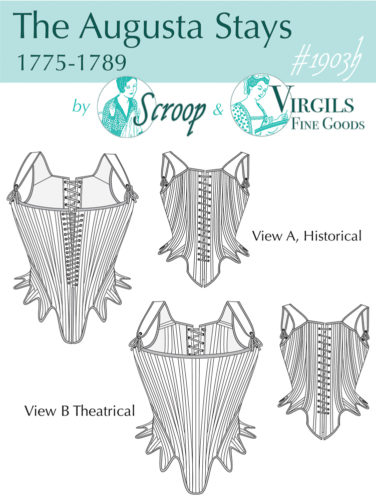
Amber used her experience in mantua making and stay fitting to pick boning layouts that would be most flattering and comfortable on a wide range of bodies. She also chose design elements that adapt well to the modern alternatives to historical materials, and construction methods that are moderately easy: good for sewists attempting their first pair of fully historical stays.
Here are some of the stays that we looked at to inform the Augusta pattern. Each features the partial front lacing, scooped neckline, and forward thrusting silhouette of the 1780s, but there are subtle differences in boning layouts, tab design, strap fastening, and fabric and finishes.
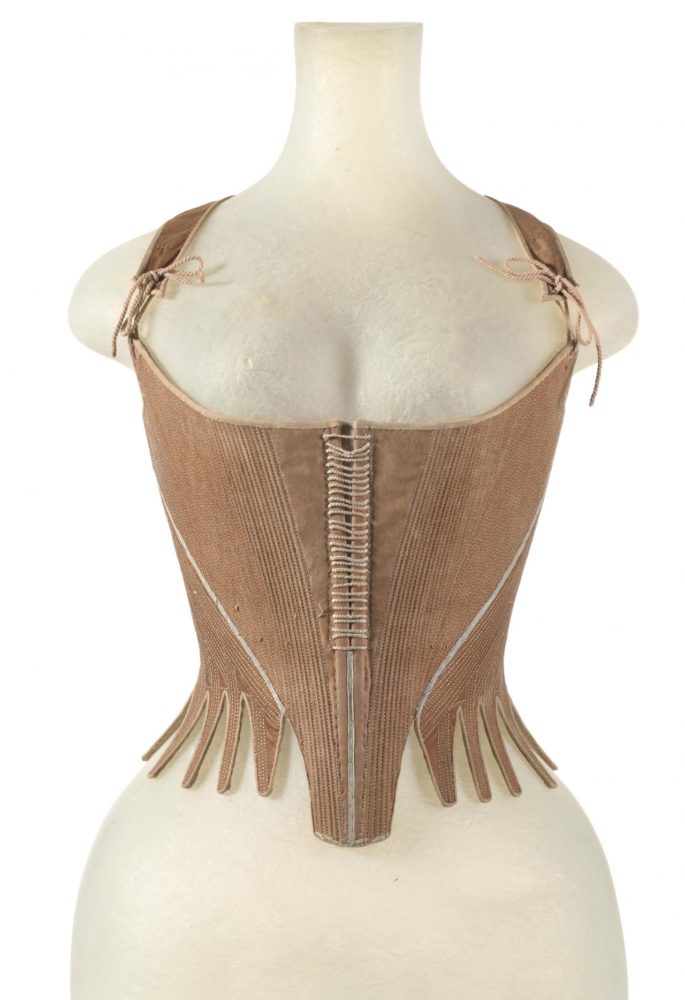
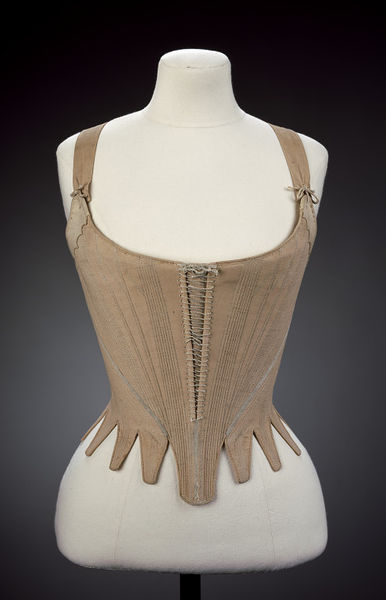
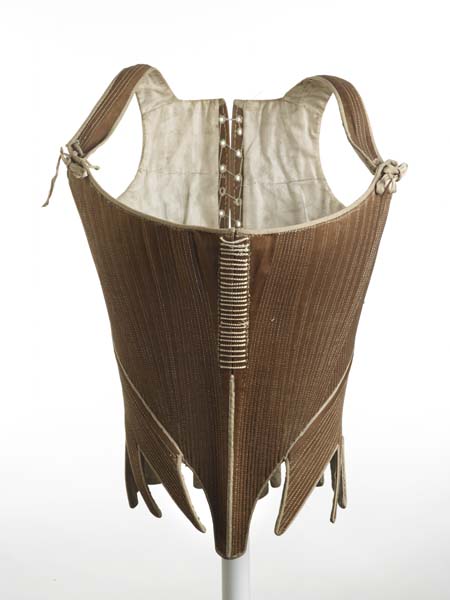

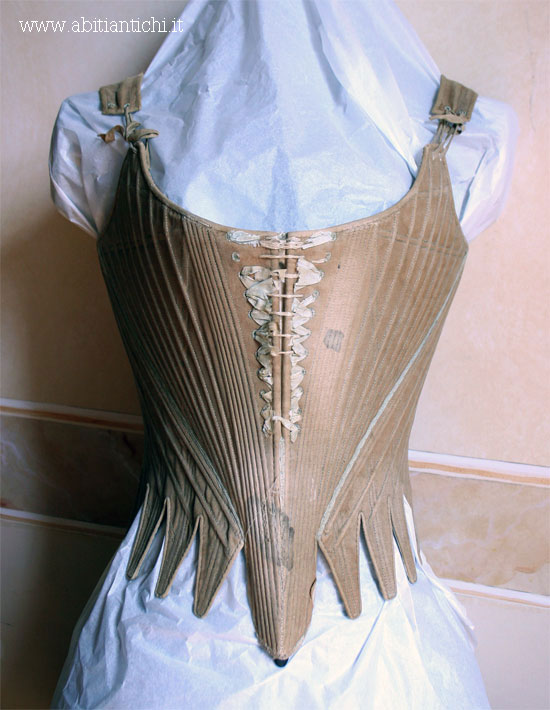

I will admit that not much of this pair made it into the final pattern, but I still love the fabulous colour, and it did influence our tab shapes:
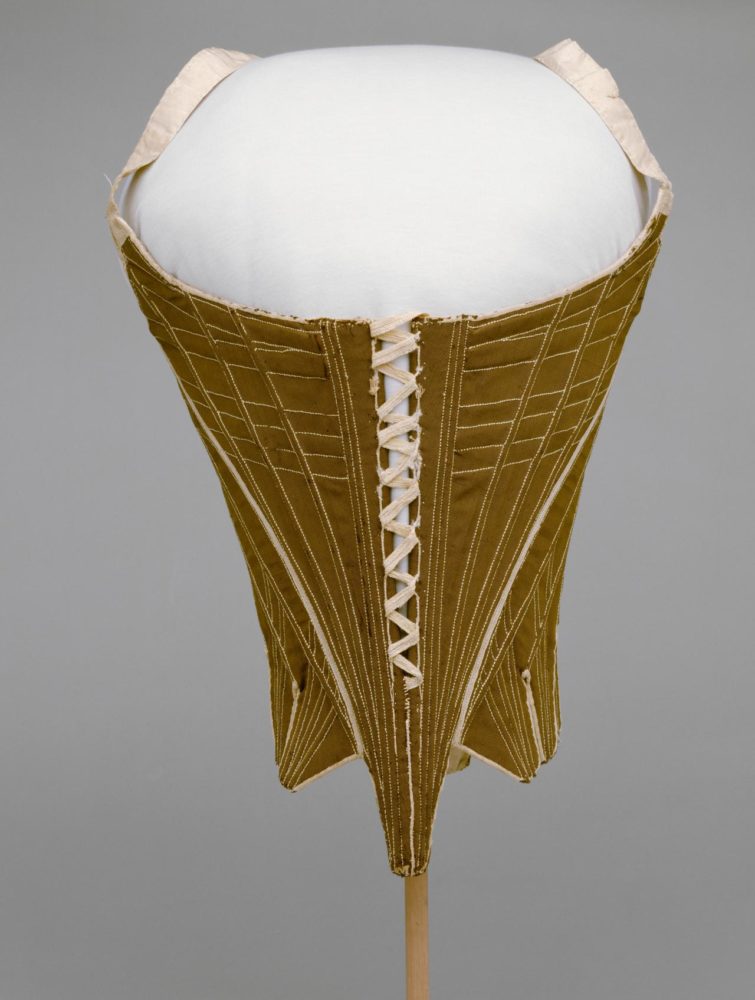


That was really interesting to see all of those extant stays. I wonder why they had that partially open top, and how it changes the lines.
My theory was that the front-lacing section was to give some separation to the breasts, and judging by your testers’ photos, that seems to be right, but I’d love to hear what you have to say on the subject, Leimomi.
These are gorgeous. I especially love how similar the first two pairs are, in style and colouring. I’m going to be using 4mm boning which is the smallest I can find, because all the extant pairs I’ve seen seem to have teeny narrow bones. I know Wissner make them smaller, but no shops seem to stock the tiny widths!
The front lacing would perhaps make breastfeeding easier?
that was my thought, too…
I wonder if the partial front lacing was to allow a different fit for different drss styles. Maybe it was laced a little looser under daywear to give less bust compression. It might make it more comfortable than having full compression at all times. (This is entirely conjecture and I have no evidence for this, but I certainly appreciate different styles and fit of bras for different occasions now)